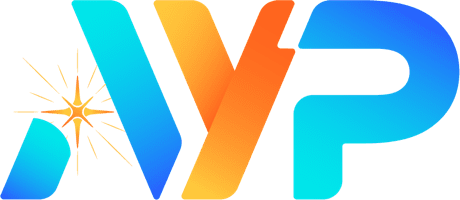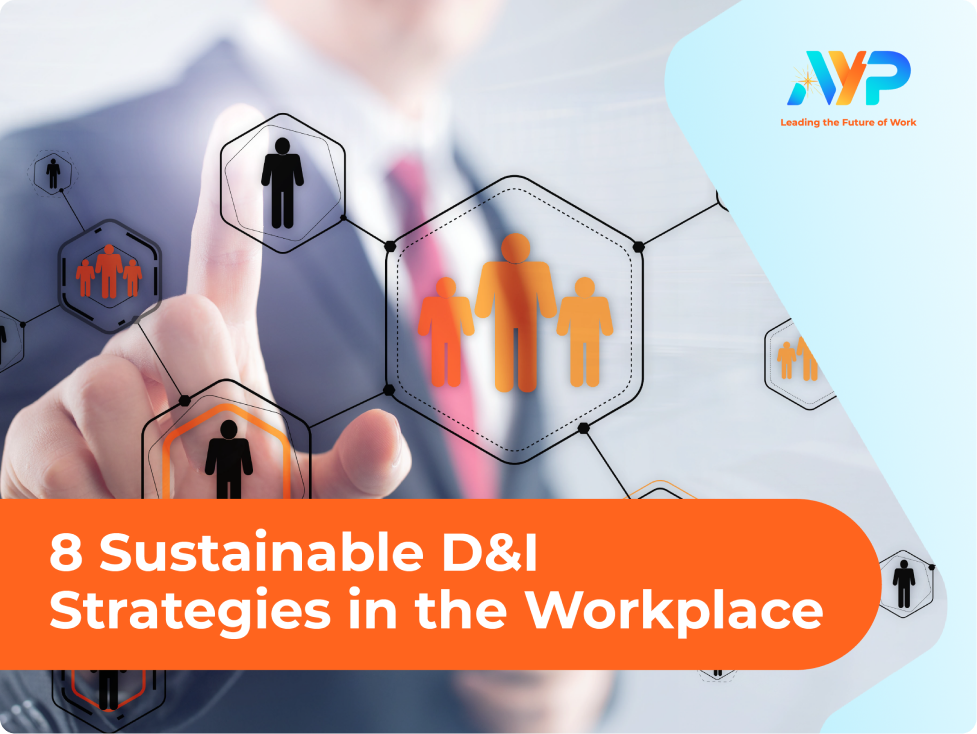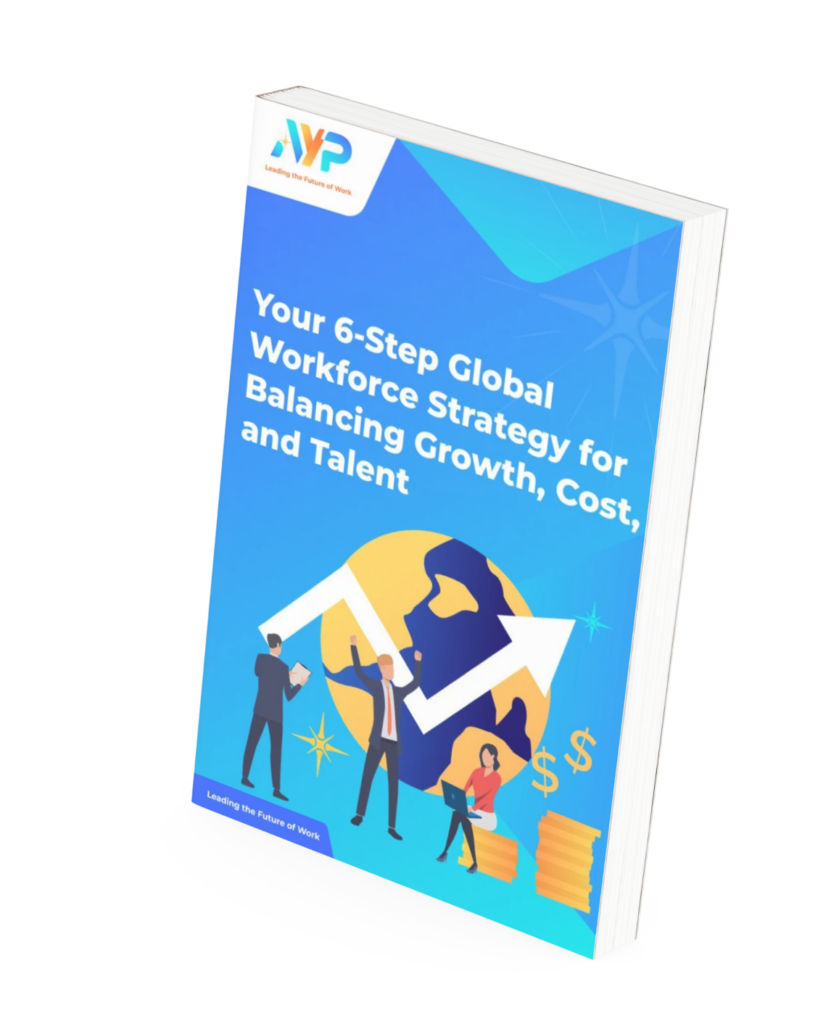D&I strategies in the workplace have become the priorities for HR professionals, even for all department directors in large organizations worldwide aspiring to create diverse and inclusive workplaces.
In this blog, we will look into why DEI is getting more popular and influential than ever, whether DEI is a talent or business strategy, metrics for inclusion, whether DEI should go beyond demographics, and the barriers to creating a diverse and inclusive workplace.
Experts argue that most companies only intend to hire people with diverse backgrounds to achieve an inclusive work environment. Therefore, we need to look into several factors regarding how people feel they are included and accepted in the workplace and from a practical business perspective.
1. Reasons for DEI
Before we discuss sustainable strategies, it is vital first to understand Why DEI is more critical than ever?
There are 2 main reasons why diversity, equity, and inclusion (DEI) are more critical than ever.
- Our society has become more diverse and globalized. Globalization has increased the need for a better understanding of equitable opportunities and treatment for all people, diversity, equity, and inclusion.
- There is a growing recognition of the detrimental effects of discrimination and biases on individuals and the community.
2. An Excellent Example of DEI
One good example that did well on DEI is Kaiser Permanente, a healthcare provider that hired more than 60% of employees who are people of color, and 75% of employees are female.
Their DEI initiatives have continuously won the company "DiversityInc Top 50 hall of fame" since 2012, including hiring, retaining, and promoting underrepresented groups and people with different sexual orientations.
In addition, the company has promoted an open culture to encourage all employees to "lead from where they stand"1, giving all the freedom and platform for positive change and growth.
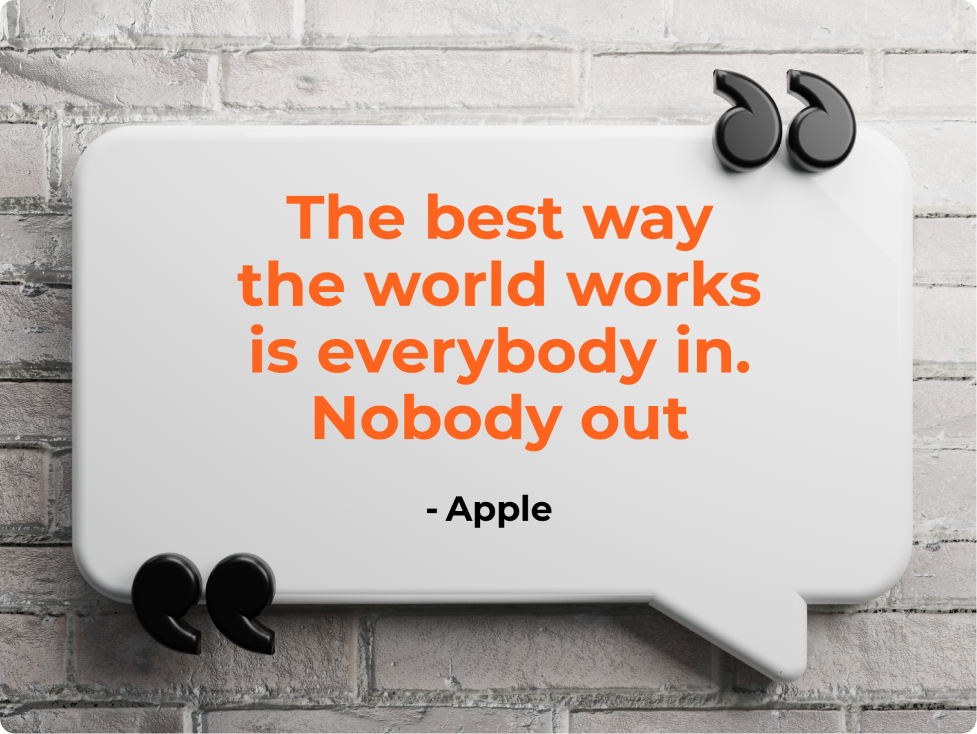
3. Talent Strategy or Business Strategy?
Traditionally, most HR professionals perceive D&I as a talent strategy instead of a broader business strategy.
For instance, the diversity and inclusion strategy will heavily emphasize hiring top talents according to the category in which the company intends to achieve gender, race, and other demographic balance.
As a result, the HR efforts of DEI will stop after the hiring process.
Why is diversity in the workplace important in business?
According to global research with 450 companies2 with more than $750 million in revenue, a diverse workforce achieved:
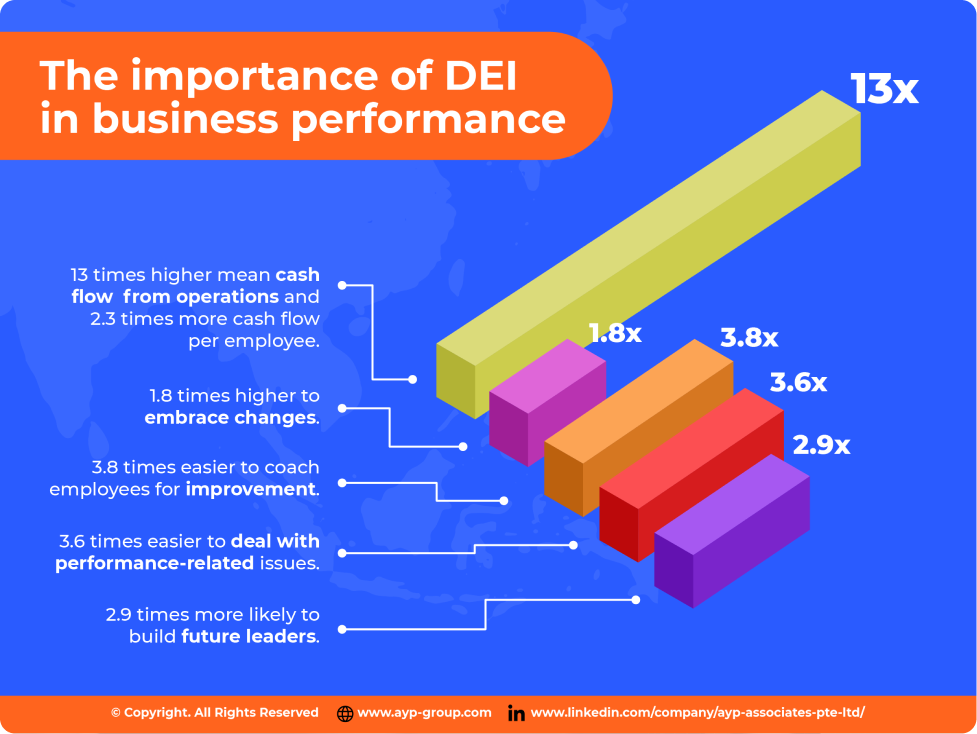
4. Assimilate D&I into Business Processes
According to Gartner research, organizations will need to focus on three (3) key areas to build DEI initiatives in the workplace:
- D&I plans must be extensively owned by everyone in the company and aligned with all the employees.
- A metric that tracks the overall D&I progress must be in place to know the success of DEI initiatives.
- To integrate D&I initiatives into the existing business and talent processes to achieve continuous implementation.
Transparent succession planning with widely communicated goals and benchmarks is necessary to ensure that the talent pool is open.
Customized performance reviews are an excellent way for better performance management to understand the diverse talent pool's strengths and weaknesses.
It is also important to nurture, train and help employees develop their unique skills and talents and offer them equal growth opportunities based on their characteristics, areas of interest, and strengths.
Implementing a policy in the organization's handbook and promoting DEI training can further reinforce diversity balance and reduce stereotypes of minorities and underrepresented groups. In such a way, creating an inclusive culture.
"D&I is not achievable via a one-time training, but rather, it has to be introduced and constantly reinforced in the business strategy plan".
5. Prioritize Metrics for Inclusion
We have discussed various methods by which HR can implement and promote diversity; another important aspect is to measure inclusion in the workplace. Employee sentiments and feedback must be carefully recorded and measured to track inclusion effectively.
Unfortunately, there is no standard or ultimate guide to measuring inclusion because human beings are unique. Every company has special initiatives according to its culture to empower a sense of belonging and attract employees to develop positive feelings and loyalty towards the company.
Suppose we must look at the factors that foster an ideal inclusive workplace. In that case, Gartner's inclusion index provides a good guideline with seven (7) areas for organizations to look into:
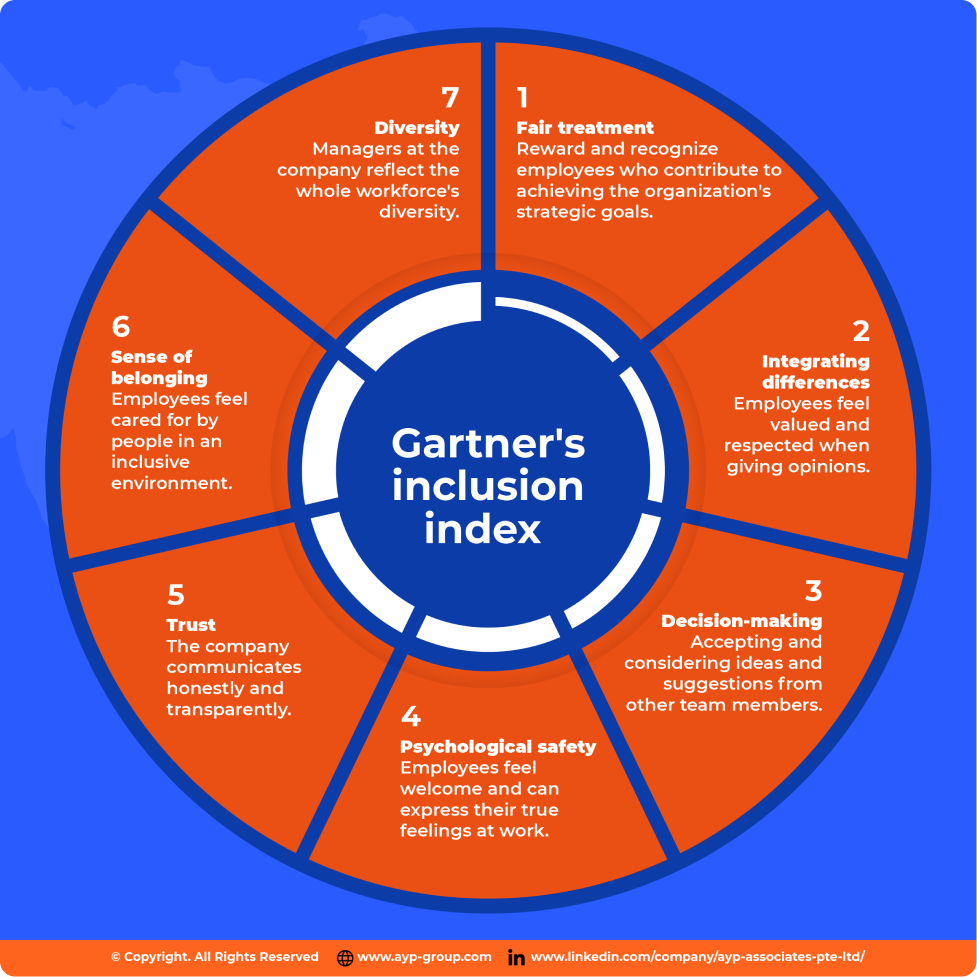
6. Go beyond Demographics
DEI goals should be a business strategy instead of a talent recruitment strategy; diversity brings revenue to the company, as indicated in point 3. Hence, it is interesting to know further if there is any feasible approach beyond integrating people with diverse backgrounds.
The answer is yes. Besides being demographically diverse, companies should look into integrating cognitively diverse talents. Creativity is one of the most important pieces of career advice that creative companies outperform by 74% in organic revenue growth than peers.
The question now is, does diversity increase creativity?
Harvard business review's analysis found a strong correlation between high performance and cognitive diversity3.
Teams that consist of individuals with more cognitively diverse (higher standard deviation in both knowledge processes and perspective) had shorter times and higher success rates in completing the tasks given.
From the DEI perspective, selecting candidates from different educational backgrounds and countries of study gathers diverse talents with unique creativity and cognitive abilities; this could enhance the diversity levels of the organization.
7. Beware of cultural biases
One of the biggest obstacles to achieving DEI goals is that companies often hire within their comfort zone or people they like due to the candidate's similar backgrounds or characteristics.
There is a common saying: "We recruit according to our company's image" and "We hire people that match our company culture to grow in the same direction". As a result, companies often gather employees with similar mindsets, and colleagues tend to gravitate toward each other similarly, leading to unconscious biases.
Relate to point 6 that DEI should go beyond demographics; psychologists call this low cognitive diversity functional bias. Functional biases limit the teams' abilities to see and create creative solutions differently.
The lack of cognitive diversity reduces opportunities to embrace change programs and even creates a higher barrier for people with different backgrounds to stay in the company due to the biased culture created.
Navigating Economic Uncertainty: HR Strategies for Business Resilience Tap in to explores the pivotal role of Human Resources (HR) in shaping business resilience during economic uncertainty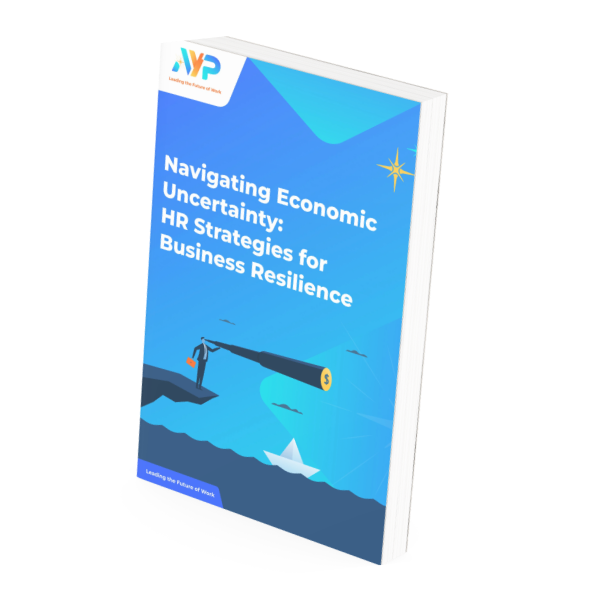
8. Get more advice on D&I solutions
Diversity and Inclusion cannot be fostered overnight. Sustainable change requires a lot of deliberate efforts, initiatives and time. Moreover, D&I is a broad topic that continues beyond hiring a diverse talent tool. Bias can permeate a workplace in subtle ways and has to be kept a close eye on.
AYP has more to offer an employer of record (EOR):
- AYP's EOR services in APAC: Manages more than 130+ payroll currencies according to the countries' labour law.
- We have seven (7) offices in Asia with more than 100+ payroll and legal experts. AYP is a highly diverse & inclusive workplace where we hire and collaborate with talents anywhere.
- We help to onboard your global team in minutes.
- We help companies go remote and build business presences across the APAC region.
- Improve your DEI score with HR digital strategies. Get a customized solution now.
Hire anyone, onboard anywhere, manage and pay anytime; this is AYP's brand promise. Let analytics, data, and algorithms help you improve your HR processes and strengthen your employment relationships.
Are you interested in more talent management, D&I, and solutions to hire from anywhere?
Please follow us on AYP's LinkedIn page for more upcoming blogs.
Featured Content
1. Boosting Employee Productivity In The Workplace
2. 5 Hot Tips to Stop Employee Burnout Before It Starts
3. Strategies To Create An Inclusive & Diverse Workforce
